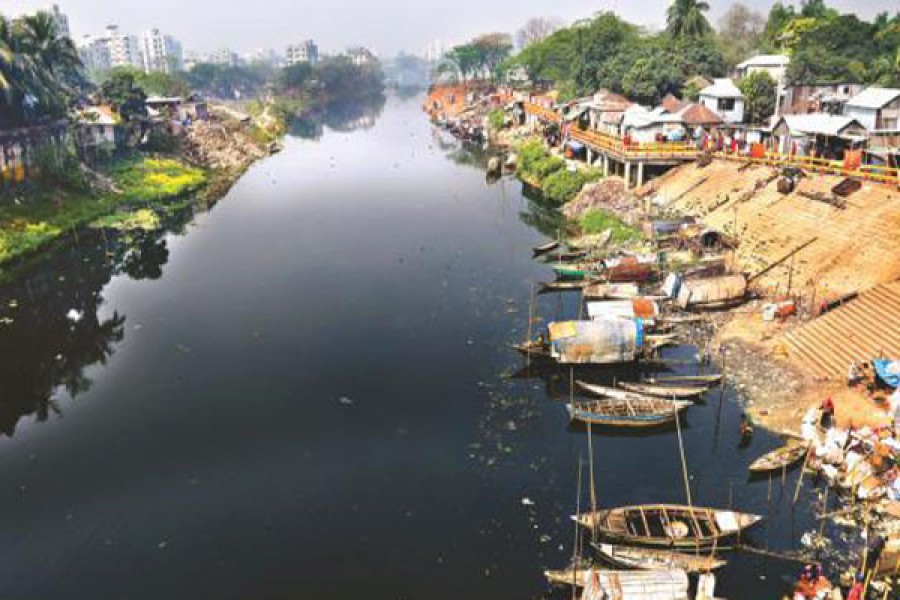
Published :
Updated :

Some recent media reports suggest that Bangladesh is doing very well in fisheries sector in last decade.
A report claimed that Bangladesh would be the top among other four fish farming countries in the world by achieving success in fish farming by 2022. According to a prediction by United Nations' Food and Agriculture Organisation (FAO), Bangladesh would be the first for achieving tremendous success in fish farming among other four fish producing countries in the world by 2022. Bangladesh is now the fourth largest inland fish producer in the world after China, India and Myanmar, according to an earlier FAO report.
However, no doubt above information is good but there is alarming news that can damage the effort to boost the fish production. That is river and water bodies pollutions. The pollution is now expanding from Dhaka to all over the country. Water pollution is exceeding the limit in most of the water sources, and has become a great threat to the survival of aquatic species.
Success in fisheries sector may get a setback if the pollution will continue.
Fish is the second most valuable agricultural crop in Bangladesh and its production contributes to the livelihoods and employment of millions of people. The culture and consumption of fish therefore has important implications for national income and food security.
Bangladesh's fish production recorded a 61 per cent rise in last ten years and crossed the 4.0 million tonnes mark in the last financial year.
Officials attributed the rise in production to quick introduction of modern technology in local fish farming, according to a report published in this paper last month.
The provisional data of the Bangladesh Bureau of Statistics (BBS) showed that the country's inland and marine fish production together rose to 4.01 million tonnes in FY 2016-17 from 2.49 million tonnes ten years ago in FY2006-07.
Director General of the Department of Fisheries (DoF) Syed Arif Azad said that they are expecting fish production to cross the target of 4.2 million tonnes by 2021 as modern technology is helping higher production in the country's limited water bodies.
The government is implementing different programmes for increasing export earning, alleviating poverty and cutting animal protein deficiency from the fisheries sources.
The department of fisheries is working for increasing production of internal open water, close water and extended tidal water bodies across the country.
But the condition of rivers and water bodies are becoming worst day by day.
Once mighty Buriganga river, which flows by Dhaka, is now one of the most polluted rivers in Bangladesh because of rampant dumping of industrial and human waste.
Much of the Buriganga is now gone. The water of the Buriganga is now so polluted that all fish have died, and increasing filth and human waste have turned it like a black gel.
The plight of the Buriganga symbolizes the general state of many rivers in Bangladesh, a large flat land criss-crossed by hundreds of rivers which faces an uphill battle to keep them navigable and their waters safe for human and aquatic lives.
Bangladesh has about 230 small and large rivers, and a large chunk of the country’s 140 million people depend on them for a living and for transportation.
But experts say many of them are drying up or are choked because of pollution and encroachment.
The pollution is also affect the another water bodies in the country. Pollution free water bodies are must to increase the fish output.
If the country wants to achieve the fish production target, first free the water bodies from pollution.


 For all latest news, follow The Financial Express Google News channel.
For all latest news, follow The Financial Express Google News channel.